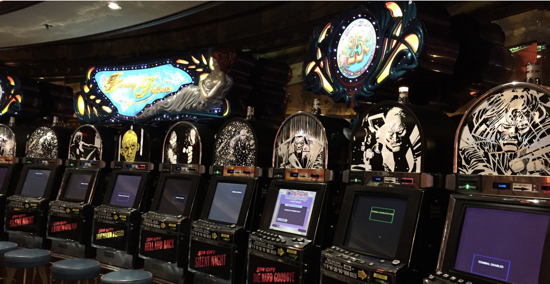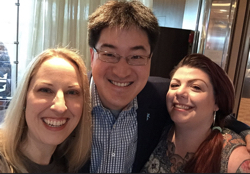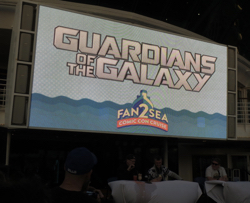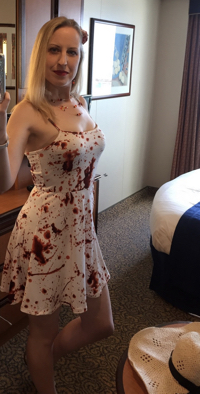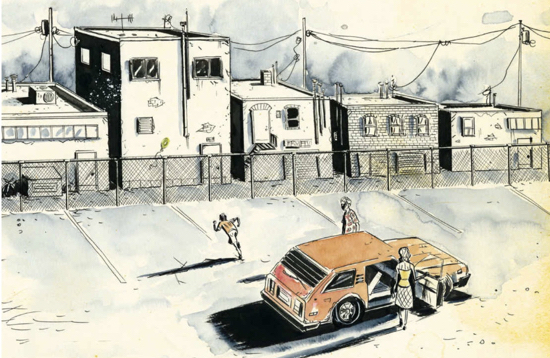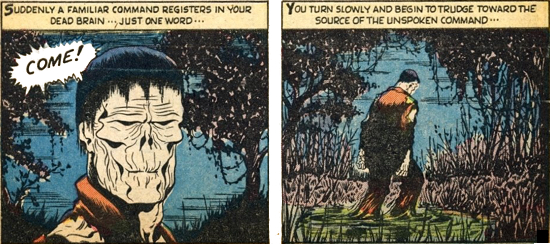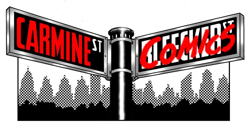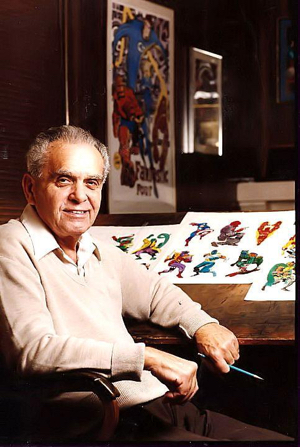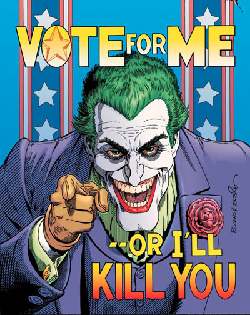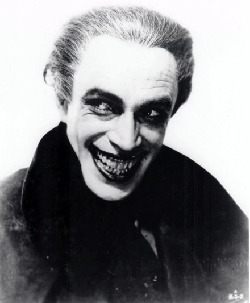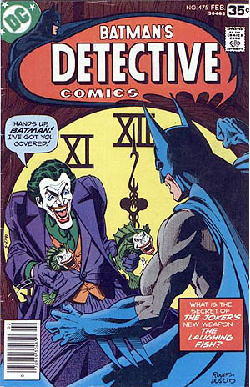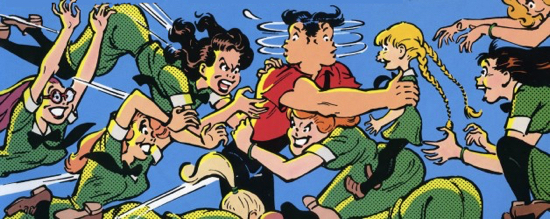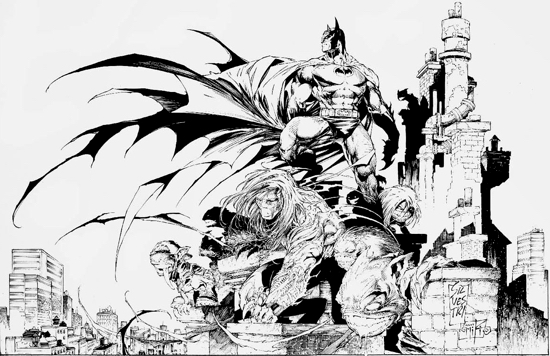Emily S. Whitten: Fan2Sea, the Floating Comic-Con (Part II)
In my last column I talked about my expectations for the Fan2Sea comic-con cruise, how it fulfilled them, and some of the things I generally loved about being at a con on a cruise ship and about the way in which Fan2Sea pulled off its maiden voyage (haha!).
Today, it’s all about the details. Want to know what your daily experience will be like if (when! I hope!) Fan2Sea happens again and you decide to go? Well, I can’t say, but I can tell you what mine was like! So here goes:
Day 1 was pleasantly low-key from the start. Because luggage was still being delivered to staterooms, I spent the first bit of ship time chilling in one of the main areas overlooking the bar, with my lovely roommate, ComicMix assistant editor Adriane Nash, and with PR guru (and former Comic Book Resources writer/editor) Steve Sunu. After some people-watching (and excited taking of first-day selfies), and a little bit of a ship tour, we wandered up to one of the main eating areas where we found plenty of food on hand; and in the midst of a mellow lunch out on deck in the warm weather, I also caught up with the ever-fun comics creator Reilly Brown (and lovely family). It was the beginning of several times when I got to actually just chill with friends I usually see in only rushed or crowded circumstances at cons, and that was super nice.
Once staterooms were accessible and we’d gotten settled in ours, I rustled up my Hot Topic Walking Dead-themed blood spatter sundress (although I do like to do full-on cosplay, I’d opted for more referential casual cosplay on this trip, given I was packing for ten days and also didn’t want to wear a lot of layers on a warm, sunny trip!). Then we headed to the pool deck, where the first two big panels, for The Walking Dead (with Michael Rooker, Lew Temple, Madison Lintz, and Seth Gilliam) and Guardians of the Galaxy (with Michael Rooker and Sean Gunn), were taking place in quick succession.
Although it was a bit windy and distracted out on the deck (which is why they moved later panels inside), it was also super cool to be reporting on a panel out in the beautiful sunny weather while literally standing in a pool. (Yes, that’s right – your intrepid reporter stood in a pool to bring you this con round-up and accompanying photographs!) And the actors fielded some great audience questions. I enjoyed the Walking Dead actors’ talking about the challenges and quirks of working on such a gruesome show; for instance, Michael Rooker shared that the bloody makeup didn’t really bother him – until he saw the zombies during lunch sitting around eating while wearing it! And one of my favorite questions to the Guardians panel elicited discussion from Sean Gunn about Gunn’s providing the rehearsal stand-in for the CGI Rocket Racoon, which the other Guardians actors would act against. Apparently at first Gunn was simply going to stand in and read Rocket’s lines, but he thought he could also provide the acting and eyelines for the others to reference, so he gave it a try – and lo-and-behold, he did such a good job of it that he ended up doing it throughout rehearsals.
After the panels we had a bit more time to explore, including checking in on the casino, which had an excellent and thorough Sin City theme, before it was time for the ship to pass under the Sunshine Skyway Bridge, which was pretty exciting considering our ship was so tall it barely cleared the bottom of it. (Also, the sunset was beautiful!) After that we headed to the formal dining room, where I confess that upon ending up at a table with some veteran cruisers, we were unable to resist the peer pressure of each ordering two appetizers and two desserts to accompany our entrees. And all were tasty! (P.S. Pro tip that I didn’t know beforehand, having not been on a cruise before – if you want to be seated with a group in the formal dining room, you have to show up with your group. But our small party also enjoyed talking with folks at the larger table, so if you don’t form your group beforehand, you might just end up making a new friend!)
The only thing that could properly finish off a dinner like that would be a great cocktail; so of course after dinner I headed up to the Walking Dead / Guardians of the Galaxy cocktail party and, on the recommendation of another attendee, tried a “twisted” peach and mixed berry daiquiri. It was a great accompaniment as I enjoyed chatting with folks at the rotating bar (which took us by surprise when it started moving!), including Lew Temple (who I was really sad to see die on The Walking Dead, and who was really friendly and laid back to talk with); and Sean Gunn (a favorite from both Guardians and, of course, Gilmore Girls, and with whom I had a really wide-ranging and interesting conversation).
The party was a ton of fun, and when it wound down, no one wanted the good times to be done – so first, a few of us had the idea of playing a round of mini golf – but the wind was so crazy up on that deck that we had to postpone that for another time. Luckily, on the Fan2Sea cruise there was always stuff going on (including, e.g., the movie theater, the in-room monster channel, and the game room); so instead we located the karaoke just in time to see Steve and Chris Sims singing Toxic by Britney Spears (yes, really – and trust me, it was an experience!). But even that kind of fun has to end sometime, so eventually, we made our way to sleep and…
Day 2 started with a relaxing room-service breakfast on our lovely private balcony, followed by a jaunt to Key West in the beautiful weather. I confess we had all kinds of complicated plans for what to see in Key West, including a butterfly garden and Ernest Hemingway’s house; but by the time we got off of the ship what we actually ended up having time for was a scenic trolley ride, a chill lunch with friends at Fogarty’s and the Flying Monkey Saloon, and a little stroll through the streets before it was time to get back to the ship.
Back on board, I attended one of the great Master Classes offered with the comics creator guests – this one with Reilly Brown. I always like watching Reilly’s approach to art, and this was no exception. He illustrated how to use dynamic action and expression to convey character in comics, and I especially enjoyed his example of how adding details to the same base character frame can result in two such disparate characters as Wolverine and Tony Stark. (And I totally claimed that sketch afterwards.) After the class, I hurried over to the live read of Charles Soule and Ryan Browne’s Curse Words #1. I love live reads, and this one featured some of the great guests on the ship – including writer Charles Soule, and actors Randy Havens, Catherine Dyer, and Sean Gunn. It was excellent fun and very well done, and I even managed to get a couple of clips on video.
The live read overlapped with the Batman pub quiz, which was also on my must-do list, in part because ComicsAlliance’s own “Batmanologist” Chris Sims was running it and had created the questions; so as soon as the live read had wrapped, I rushed over to the pub to join Adriane, who had been holding down the fort for two of the six quiz rounds all by herself. Steve joined our team there, and despite us all missing the first round entirely and only one team member being there for rounds 2 and 3, we still came in fourth! Go team! The quiz was great, and pretty darned challenging, too! (Kudos, Chris!)
Of course, all of that hard work made us hungry, but the cruise more than took care of that with another trip to the formal dining room, before we headed back to the pub for the After Hours War Stories with comics creators. This was a pretty unique program (with no recording allowed) in which creators shared the sort of personal industry and convention stories you wouldn’t usually get at a big convention panel. The stories shared definitely made this program a favorite of mine, and I was glad they enforced the No Recording rule so that everyone felt comfortable sharing.
By that point, we were well into the late night activity portion of the day. I stopped by the Nerdlesque (it’s not really my scene, but there were definitely some creative themed scenarios being played out onstage) and then was challenged to a game of air hockey (I totally lost) and issued my own challenge for a game of pool (Adriane and I totally won!). And then somehow, it was five a.m., and way past time for all sensible reporters to be in bed. Ah, convention life.
Day 3 was the one day Adriane and I had decided to book a specific excursion through the cruise line, since we were going to Mexico and had a longer time in port. We booked a Mayan ruins tour that included lunch and a trip to the beach, and were delighted to find the lovely and talented Gail Simone and her husband Scott were part of our tour group. We had an adorably charming and funny tour guide named Luis to show us all around; I could actually feel the history of the Mayan ruins as it was described to us; the lunch was tasty; swimming at the beach was exciting (there were reasonably strong currents and also underwater rocks to avoid!); and we had a great time experiencing it all with Gail and Scott.
On returning to the ship, despite a pretty full day in Mexico, it was Stranger Things day and of course there were con things I wanted to do; so I first stopped for a brief glimpse of Goonies, which was being screened on the pool deck; and then changed into my Stranger Things party cosplay (yes, I was costuming The Wall, with a Hot Topic picture frame dress and blinking Christmas lights!), and went to the Stranger Things cocktail party, where I had an entertaining time talking with other fun cosplayers and fans, and meeting Shannon Purser, Catherine Dyer, Randy Havens, and David Harbour – all of whom were wonderfully nice and fun to talk to! (Caleb McLaughlin and Gaten Matarazzo were also circulating, but I did not get to chat with them due to the crowd – they looked like they were really enjoying themselves, though.)
After the party, I stopped by the pub to see how the Cards Against Humanity: Writers Edition program was going; and discovered that all of the comics guests were there chilling. So I sat down for a chat; and more friends came around; and then we wandered over to the casino; and next thing I knew, it was almost five a.m. again and we were ordering hamburgers from room service. Ah, cruise life!
Day 4
And then suddenly, it was Day 4! Our last full day on the ship, alas!! It was also the day of the Deadpool Panel, which I was moderating; so I donned my Hot Topic Deadpool dress (love that store for geek dresses!) and headed to the Pacifica Theater, which, incidentally, has some really interesting props backstage. This panel featured Gail Simone, Reilly Brown, Scott Koblish, and Chris Sims, and we had a riot of a time talking Deadpool on stage and taking questions from the audience – probably the most fun I’ve had on a panel to date! We talked about everything from how to get into the head of such a character to what it’s like to draw a story that’s told entirely on the covers of comic books to what the comics creators thought of the Deadpool movie adaptation – and happily, it seemed like the audience was having just as much fun as all of us on stage!
After the panel, the Deadpool folks headed up to their tables at Artist Alley, and after a brief rest (hey, even I get a little tired after such late nights) I did too. Even though this con was, for obvious reasons, organized differently than a traditional convention, it still had sections of time set aside for fans to meet comics creators in Artist Alley, and I was pleased to see a setup that made it easy for everyone to interact, and a good number of folks waiting to meet the talented guests. While there, I enjoyed watching Scott Koblish and Reilly Brown draw, chatting with Laura Martin, Scott Snyder, and Gail Simone, flipping through some of Creees Hyunsung Lee’s cool art, and picking up a copy of Curse Words #1 (hey, after that live read, I had to have it!) from Charles Soule.
By the time Artist Alley closed, it was just about time for the Wayne Foundation Black Tie Dinner (for which I had brought my fancy sequined Suicide Squad Harley Quinn dress, because what else do you wear to a Batman-themed fancy dinner?). By now I was a Super Pro at cruising (hah!), so I’d suggested we get together a big table of folks ahead of time, and we managed to make it happen. It was great to have our last big dinner be with a solid group of friends; and fun to get all dressed up for it! But it was also nice to relax for the last bit of the cruise, so after dinner Fancy Dress Harley turned into Casual Cruise Harley, and then, fittingly, ran into The Joker. Who managed to convince me, a solid non-gambler, to go gamble. (Look, when someone says they’ll bankroll you to go play a slot machine called the “Enchanted Unicorn,” there is really only one response, and that is: “Let’s go!”) And solid non-gambler me might have to revise that solid stance, because lo-and-behold on top of the money we put in we won a whole $54! At which point I decided it was probably best to end on a high note, and Adriane and I took our end-of-cruise sad feet back to the room for one last night of sleep in our cozy little stateroom.
And thus, the next morning we disembarked in Tampa and the adventure ended with a delicious breakfast of crepes, some fun vintage store shopping, and champagne sangria and lunch at the oldest restaurant in Tampa. And I would not be telling a lie if I said this was possibly the most fun I’ve had at a comic con, and that I most definitely want to go back. Tomorrow, if possible.
But since I can’t go back just yet, I’ll just have to console myself with looking at the full album of photos I took and crossing my fingers that soon, we’ll be hearing announcements of another Fan2Sea. When that happens, I assume you’ll all be signing up to go with me!
And until then, and until next column, Servo Lectio!


